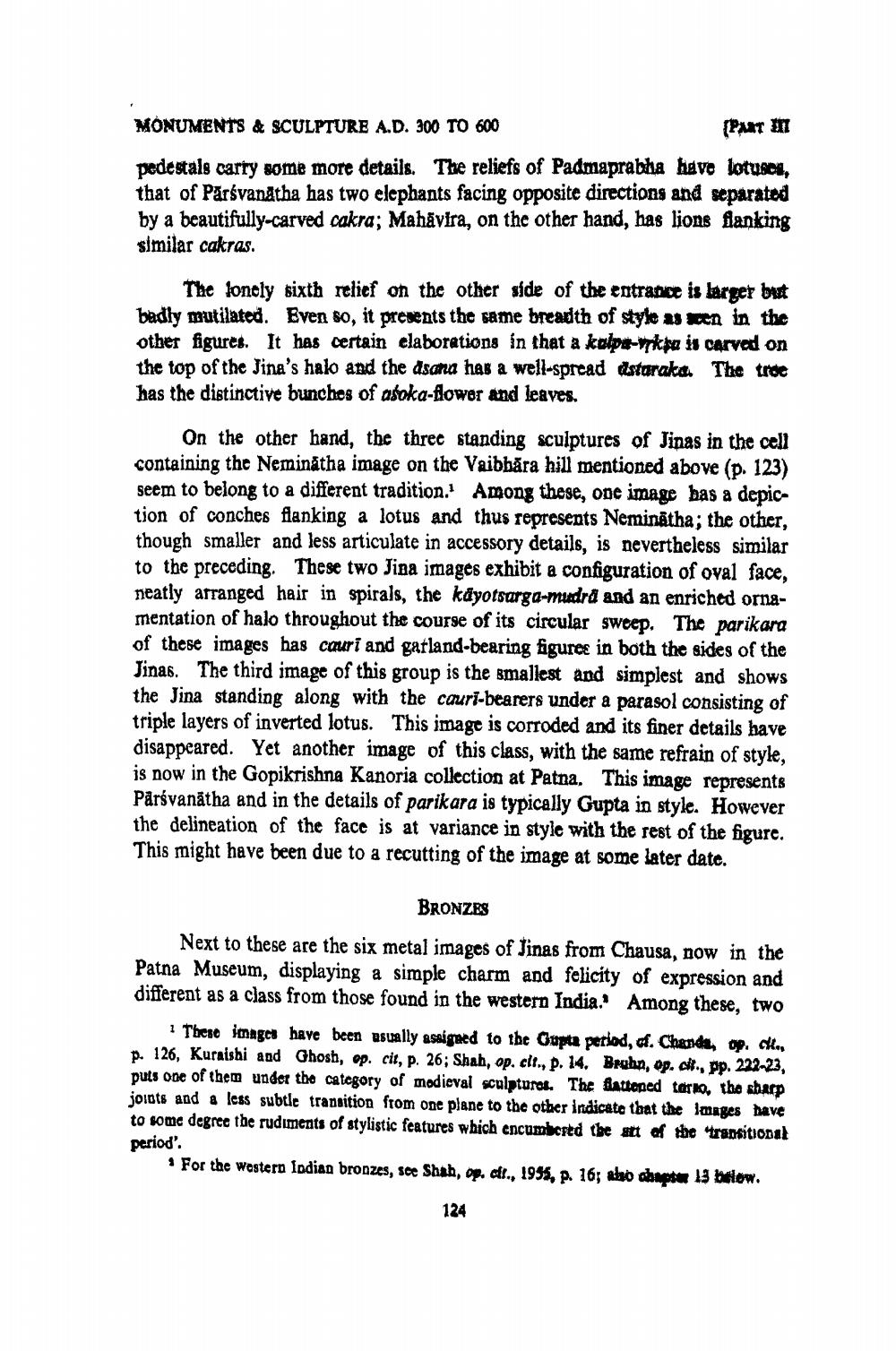________________
MONUMENTS & SCULPTURE A.D. 300 TO 600
(PART III pedestals carry some more details. The reliefs of Padmaprabha have lotuses, that of Parsvanatha has two elephants facing opposite directions and separated by a beautifully-carved cakra; Mahavira, on the other hand, has lions flanking similar cakras.
The lonely sixth relief on the other side of the entrance is larger but badly mutilated. Even so, it presents the same breadth of style as seen in the other figures. It has certain elaborations in that a kalpa-kpa is carved on the top of the Jina's halo and the asana has a well-spread dstaraka. The tree has the distinctive bunches of asoka-flower and leaves.
On the other hand, the three standing sculptures of Jinas in the cell containing the Neminatha image on the Vaibhara hill mentioned above (p. 123) seem to belong to a different tradition. Among these, one image has a depiction of conches flanking a lotus and thus represents Neminatha; the other, though smaller and less articulate in accessory details, is nevertheless similar to the preceding. These two Jina images exhibit a configuration of oval face, neatly arranged hair in spirals, the kayotsarga-mudra and an enriched ornamentation of halo throughout the course of its circular sweep. The parikara of these images has cauri and garland-bearing figures in both the sides of the Jinas. The third image of this group is the smallest and simplest and shows the Jina standing along with the cauri-bearers under a parasol consisting of triple layers of inverted lotus. This image is corroded and its finer details have disappeared. Yet another image of this class, with the same refrain of style, is now in the Gopikrishna Kanoria collection at Patna. This image represents Parsvanatha and in the details of parikara is typically Gupta in style. However the delineation of the face is at variance in style with the rest of the figure. This might have been due to a recutting of the image at some later date.
BRONZES
Next to these are the six metal images of Jinas from Chausa, now in the Patna Museum, displaying a simple charm and felicity of expression and different as a class from those found in the western India. Among these, two
1 These images have been usually assigned to the Gupta period, of. Chanda, op. cit., p. 126, Kuraishi and Ghosh, op. cit, p. 26; Shah, op. cit., p. 14. Bruhn, op. cit., pp. 222-23, puts one of them under the category of medieval sculptures. The flattened terao, the sharp joints and a less subtle transition from one plane to the other indicate that the images have to some degree the rudiments of stylistic features which encumbered the att of the transitional period'.
For the western Indian bronzes, see Shah, op. cit., 1955, p. 16; also chapter 13 below.
124




